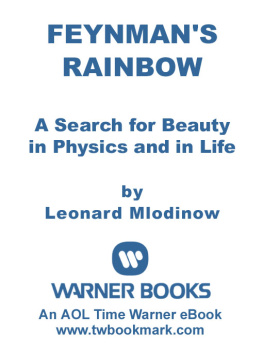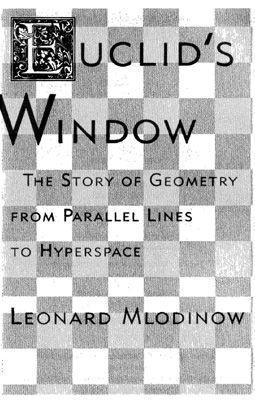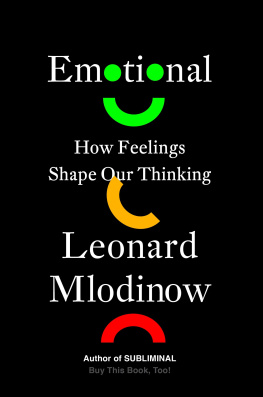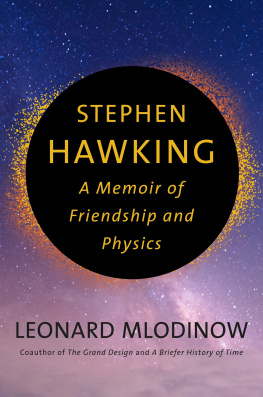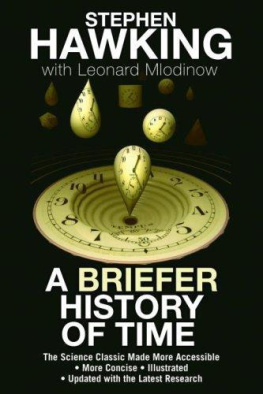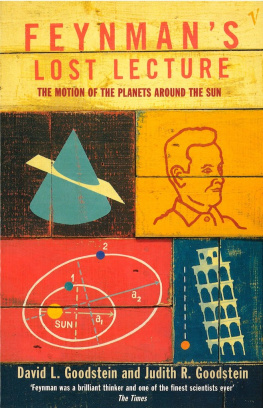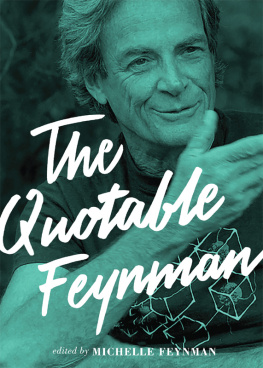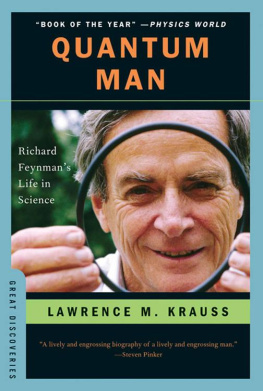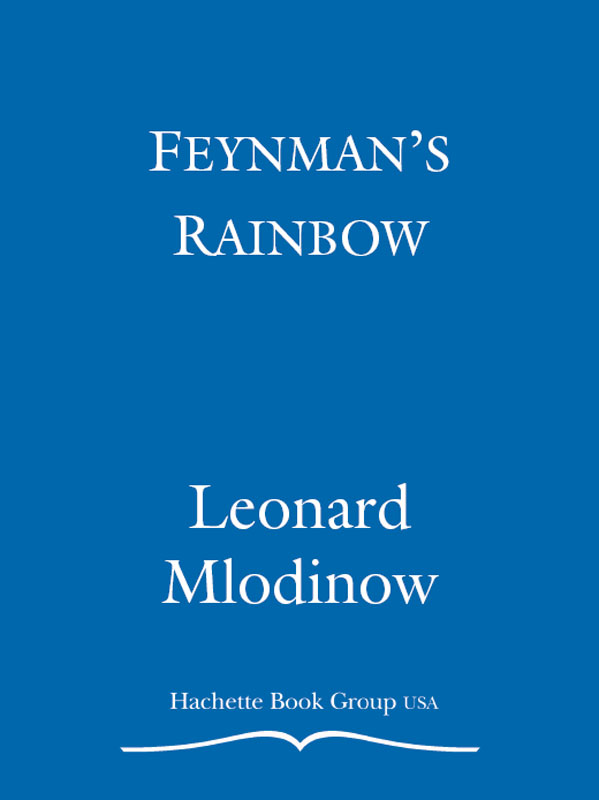Also by Leonard Mlodinow
Euclids Window: The Story of Geometry from Parallel Lines to Hyperspace
To Donna Scott
I am grateful to Jamie Raab at Warner Books for seeing the promise of this book, and to Les Pockell and Colin Fox, my editors at Warner, for their invaluable support and insightful suggestions, not to mention all their hard work; to Susan Ginsburg for her guidance, encouragement, friendship, andmost of allher faith in me; to Michelle Feynman, Eric Wilson, Mark Hillery, Matt Costello, Erhard Seiler, Fred Rose, Annie Leuenberger and Stephen Morrow for their input, support and friendship; to Donna Scott, for her love and friendship; and to the Five Spot bar in Brooklyn, where I was always kindly tolerated as I lingered over a few beers, pondering the meaning of physics and life.
So spoke an honest man; the outstanding intuitionist of our age and a prime example of what may lie in store for anyone who dares to follow the beat of a different drum.
Nobel Laureate Julian Schwinger,
in his obituary of Feynman in
Physics Today,
February 1989
Fewer than eight hundred Americans earn a Ph.D. in physics each year. Worldwide, the number is probably in the thousands. And yet from this small pool comes the discovery and innovation that shapes the way we live and think. From X-rays, lasers, radio waves, transistors, atomic energyand atomic weaponsto our view of space and time, and the nature of the universe, all this has arisen from this dedicated pool of individuals. To be a physicist is to have an enormous potential to change the world. It is also to share a proud history and tradition.
To a physicist, the most important years are those of graduate school and immediately after. It is the time you find yourself and build your career. This book is about my time just after graduation in 1981, when I was on the faculty of the California Institute of Technology, one of the worlds top research facilities.
My experience there was not the usual one. I arrived at Caltech feeling lost and intimidated. I was uncertain of my abilities and unusually unfocused in the vision I had for my future. I was also unusually lucky to have landed an office just down the hall from one of the greatest physicists of the centuryRichard Feynman. It was Feynman who, while on the 1986 space shuttle commission, made worldwide headlines demonstrating the solution to the riddle of the failed O-ring by dunking it in ice water and pounding it on the table to show it had become brittle. That was vintage Feynman: a triumph of common sense over computer models, of insight over equations. A year earlier Feynmans irresistible memoir, Surely Youre Joking, Mr. Feynman! had exploded on the bestseller lists. In the popular psyche, Feynman has become, since his death in 1988, the Einstein of modern times. In 1981, Feynman was largely unknown outside the physics world, though within it he had been a legend for decades.
I had been given my fellowship because my Ph.D. thesis, which was on quantum theory in infinite dimensions, had caught the attention of some notable physicists. Did I really fit in here, with two Nobel Prize winners down the hall, and the best students in the country all around me? Week after week I came to my office and pondered the great open problems of physics. No ideas came to me. I was certain that my earlier work had been a fluke and that I would never again discover anything worthwhile. I suddenly understood why Caltech had one of the highest suicide rates of any college in the country.
One day I got the courage to knock on the door to Feynmans office and, to my surprise, found that I was welcome. He had just undergone his second surgery for the cancer that would eventually kill him. Over the next two years we spoke many times, and I had the opportunity to ask him questions, such as: How do I know if I have what it takes? How does a scientist think? What is the nature of creativity? From this famous scientist near the end of his days, I found the answers I sought about the nature of science and the scientist. But more than that, I discovered a new approach to life.
This book tells the story of my first year on the Caltech faculty, beginning in the winter of 1981. In that sense it is the narrative of a young physicist trying to find his place in the world, and of the famous, old, and dying physicist whose wisdom helped him. But it is also the story of Richard Feynmans last years, his rivalry with fellow Nobel laureate Murray Gell-Mann, and the beginnings of string theory, today the leading theory on the frontiers of physics and cosmology.
This book tells a story, but it is not a novel. I took notes on and recorded many of my conversations with Feynman because I was awestruck. The passages in italics are based on these notes and the transcripts of some of these discussions. Everything I describe in this book happened to me. But I have combined and altered events, and, other than the historical figures and those whose specific work I quoteFeynman, Murray Gell-Mann, Helen Tuck, John Schwarz, Mark Hillery, and Nick PapanicolaouI have altered names and personalities in order to best portray my experience.
I am grateful to Caltech for being such a lively and exciting place to do research, and for, so long ago, having the confidence that they had in me; and I am especially grateful to the late Richard Feynman, for his many lessons on life.
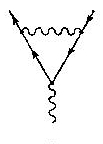
I N A GRAY CEMENT building on the olive treelined Caltech campus on California Boulevard in Pasadena, a thin man with longish hair steps into his modest office. Some students, on this planet less than one-third as long as the professor has been, stop in the hallway and stare. No one would say a word if he didnt come to the office this day, but nothing could keep him away, especially not the surgery, the effects of which he would no longer allow to ruin his routine.
Outside, bright sun bathes the palm trees, but it is no longer the withering sun of the summer. The hills rise, brown now giving way to green, their vegetation reborn with the coming of the more hospitable winter season. The professor might have wondered how many more cycles of green and brown he would live to witness; he knew he had a disease that would kill him. He loved life, but he believed in natural law, and not in miracles. When his rare form of cancer was first discovered in the summer of 1978, he had searched the literature. Five-year survival rates were generally reported to be less than 10 percent. Virtually no one survived ten years. He was into his fourth.
Some forty years earlier, when he was almost as young as the students currently around him, he had sent a series of papers to the prestigious journal Physical Review. The papers contained odd little diagrams, which constituted a new way of thinking about quantum mechanics, less formal than the standard mathematical language of physics. Though few seemed convinced of his new approach, he thought how amusing it would be if some day that journal would be full of his diagrams. As it turned out, the method they reflected proved to be not only correct and useful, but revolutionary, and on that day late in 1981, in the Physical Review, his diagrams were ubiquitous. They were about as famous as diagrams get. And he was about as famous, at least in the world of science, as scientists get.
The professor has been working on a new problem the past couple of years. The method he worked out in his student days had been wildly successful when applied to a theory called quantum electrodynamics. That is the theory of the electromagnetic force that governs, among other things, the behavior of the electrons that orbit the nucleus of the atom. These electrons impart to atoms their chemical properties and their spectral properties (the colors of light they emit and absorb). Hence the study of these particular electrons and their behavior is called atomic physics. But since the professors student days physicists had made great progress in a new field called nuclear physics. Nuclear physics looks beyond the electronic structure of atoms to the potentially much more violent interactions of the protons and neutrons within the nucleus. Though protons are subject to the same electromagnetic force that governs the behavior of the atomic electrons, these interactions are dominated by a new force, a force that is far stronger than the electromagnetic force. It is called, fittingly, the strong force.

